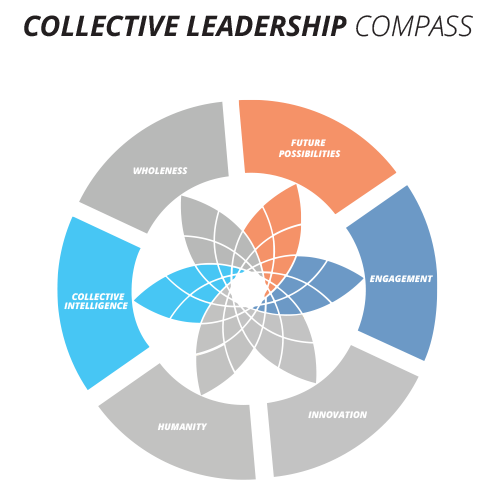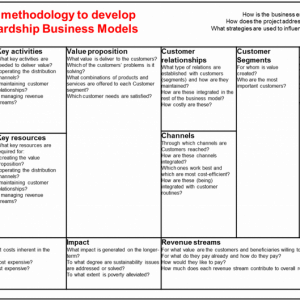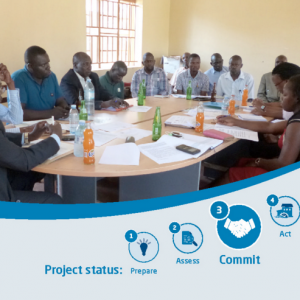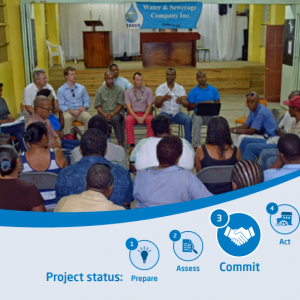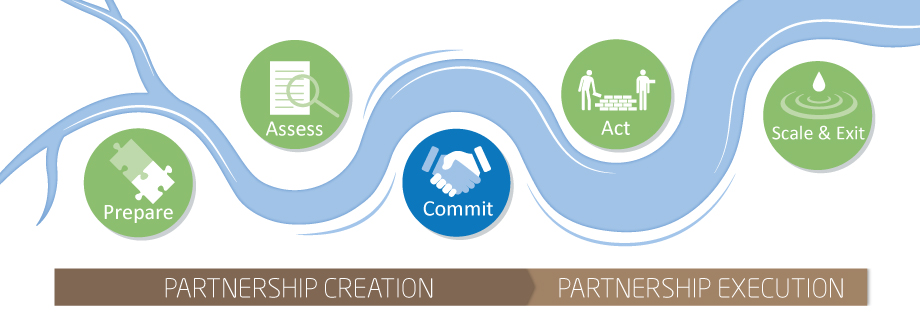
The third Step of the NRAF sees the development of business cases and concepts, the elaboration of modes of delivery and taking on of responsibilities, the identification of necessary skills, and the securing of commitments from core partners and stakeholders, among others. This Step should lead to the signing of a memorandum of understanding among core partners.
Selected key questions for Step 3
- Have all stakeholders been involved in developing and agreed to the implementation plan?
- Have we developed a realistic implementation plan, follow-up meetings, governance structure, and transfer of responsibilities?
- Have we transparently documented results, agreements, and planning?
- Have we agreed to efficient and transparent systems for internal and external communication?
- Have we consolidated the initiative in an appropriate form of agreement and structure?
- Have we secured sufficient resources and built collective leadership capacities for moving forward?
Example
Assessing water risks in Tanzania: The “Usa River Partnership” for water stewardship is conducting a study in consultation with all relevant stakeholders, including upstream and downstream villages, to ensure an accurate understanding of water risks and options for water risk mitigation measures, including a costs and benefits analysis, to develop a Water Risk and Action Plan (WRAP). This WRAP will be validated by a kick-off stakeholder meeting and signed by each partners. See more on the tools here: direct link to Phase 2 in the WRAF.
The Compass Dimensions and Aspects that are most commonly associated with NRAF Phase 2: Assess
- Collective Intelligence: diversity – foster diversity in thought, viewpoints, background, and experiences
- Humanity: empathy – embrace the perspectives of others and open gateways for reconciliation
- Future Possibilities: future orientation – focus on potential or opportunities and drive change for the better
- Innovation: creativity – nourish sources of creative energy and collective generation of ideas
